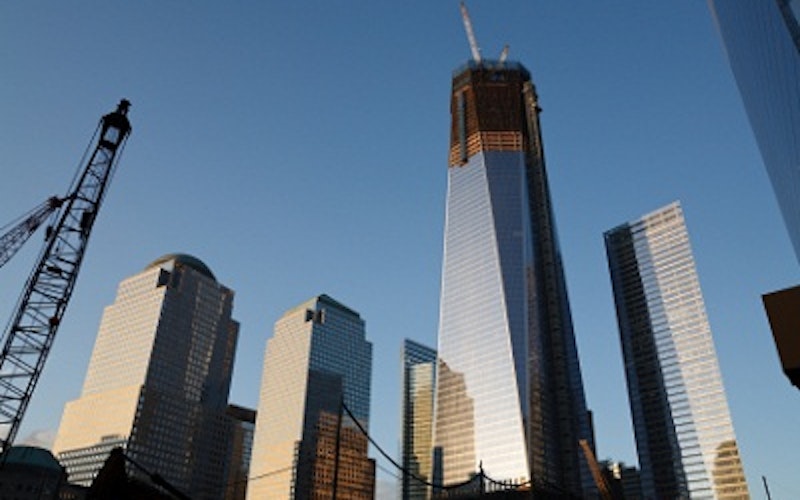
Culture At Large
The missed opportunity of the Freedom Tower
The Empire State Building has once again lost its claim to being New York City’s tallest tower (having been eclipsed several times in the “world’s tallest” category). With 100 floors complete and counting, the Freedom Tower, aka 1 World Trade Center, has passed the venerable Art Deco landmark recently and isn’t looking back.
This event, though greeted with press releases and mild fanfare, left me more sad than satisfied. For one thing, the so-called Freedom Tower owes its very existence to the horrific attacks of Sept. 11, 2001, an event I experienced from the seat of a commercial airliner and an unplanned stay in Salt Lake City, Utah. Without 9/11, after all, there is no need for a Freedom Tower.
Its origin is sad enough in itself, but the story of the tower’s design is even sadder. Building anything in Manhattan is famously difficult, but the Freedom Tower’s story is more fraught than most. The commission to design the tower (and its name) originally belonged to Daniel Libeskind, an engaging architect whose work mostly leaves me cold, but whose inspiring back story made his proposed Freedom Tower a worthy successor to the World Trade Center’s twin towers.
Libeskind’s design, which clocked in at an unsubtle 1,776 feet, was an office tower whose twisting form and upraised mast was a subtle, abstracted salute to the Statue of Liberty, symbol of American freedom. Not a replica, but an homage, it was, in my opinion, well done (this from a less than tepid fan of most of Libeskind’s work). It was a heartfelt, bracing, uplifting proposal for a tragic site.
Though greeted with fanfare, the rise of the Freedom Tower has left me more sad than satisfied.
But among other problems, Libeskind could never be sure who his client was: Silverstein Properties, the real estate company that owned the World Trade Center; the Port Authority of New York and New Jersey, who owned the site; or the commission appointed to oversee the rebuilding of the site and buildings destroyed in the 9/11 attack. The resulting process - a torturous web of panels, commissions, bosses, landlords and behind-the-scenes posturing - resulted in a new architect and a new plan that eviscerated Libeskind’s evocative design.
Fast forward through several years of politics, panels and backstage maneuverings, and the design work ended up going to David Childs, the blue-chip design head of a blue-chip corporate design firm, Skidmore Owings & Merrill, which counts Lever House, the John Hancock Center and the (formerly) Sears Tower among its past commissions. Child’s take on Libeskind’s design is plainer (Hancock Center plain) and less sculptural, with a mast that looks more like a TV antenna (which it is) than an upraised arm. Though still 1,776 feet tall, all the allusion has been drained from Libeskind’s idea, along with the elegance. The new Freedom Tower sits on a 200-foot-tall concrete base meant to render it impervious to ground-level explosions. And the Titanic was unsinkable, right?
Christians should, I suppose, be cheered by the valiant attempt of those involved to redeem the tragedy of 9/11 through the reconstruction of the site (though of course the actual site of the Twin Towers is now a commemorative park, previously discussed on Think Christian). But the process of arriving at this point - the incredibly Byzantine path to Childs’ redesign of Libeskind’s tower and the resultant building - is truly the proverbial camel, a horse designed by a committee. Instead of redemption, mostly what I see is ego, posturing, hubris and the raw exercise of political power in a city where the latter, more than the dollar, is the true coin of the realm. Redemption? Not so much.
What Do You Think?
- What is your impression of the Freedom Tower?
- How could a skyscraper best capture the theme of restoration?
- What notable skyscrapers resonate with you and why?
Topics: Culture At Large, Arts & Leisure, Art, News & Politics, North America